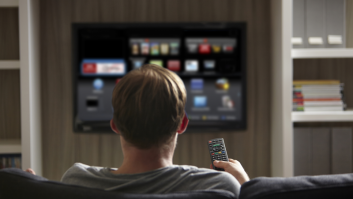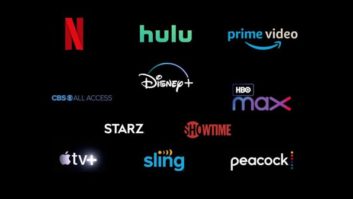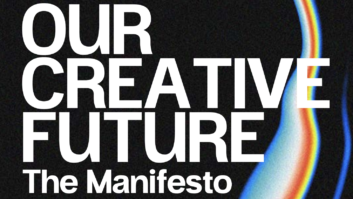
…and the challenge of unlimited shelf space. That’s the future of content distribution according to Jay Samit, CEO, SeaChange
With 64 per cent of millennials consuming content on multiple screens at the same time, the question of where one consumes media has been replaced by how one consumes media. The so-called second screen is now becoming the primary screen on which most viewers get their news and stay connected to their world.
Proof of this disrupted landscape can also be found in who is cord-cutting, who is time-shifting, and who is demanding unbundled programming. Social media has further impacted the shifting dynamics of content consumption, allowing friends to share the viewing experience with one another and with their broader communities.
Television programming is the number one topic on Twitter, and dozens of startups in the social space are linking second screen experiences. Multiparty video chat companies such as ooVoo and Hangouts are enabling friends all around the globe to watch videos together and chat.
Consumers are becoming rebroadcasters, and distribution of content is slipping past artificially constructed walls and borders. People no longer need to sit on the same couch to enjoy shared experiences. The disruption in the distribution of television programming is also affecting how shows are produced, marketed, and designed. Smart TVs and second screen apps are evolving every day to more efficiently match advertisers to viewers, and viewers to the programming they desire.
A new generation of entrepreneurs is creating opportunities for connections around the content without ever being tied to the cost of creating that content. Just as eBay mastered physical distribution without owning the products or the trucks that delivered those products, today’s startups are leveraging the programming experience without owning the content.
Moreover, the social aspects pioneered by music services such as Spotify and Deezer will soon expand to video and further enable advertisers to engage directly with viewers sharing video content. The majority of marketers, though, continue to cling to the living room to reach consumers, despite innovation across every possible screen in the home.
While broadcasters and cable networks cite increased demand at advertising upfronts as proof that nothing has changed in the living room, one should recall that 1999 was the music industry’s biggest year, before it saw its business model implode.
“Facts are the enemy of truth,” Quixote famously says, adding, “Every man is the son of his own works.” If today’s content creators are bemoaning the fact that disruptions in distribution are reducing dollars of revenue into digital dimes, the emergence of smartphones is turning digital dimes into mobile pennies. Six billion mobile users still have the potential to add up to a lot of pennies.
With so much content available, however, the real challenge is no longer access to that content but discovery of it. Curation, collaborative filtering, and personalisation are all paths for entrepreneurs to cash in on digital distribution without having to invest costly dollars on content creation. As internet writer Clay Shirky points out, “It’s not content overload. It’s filter failure.”
Excerpted from DISRUPT YOURSELF © 2015 Jay Samit. Excerpted by permission of Flatiron Books, a division of Macmillan Publishers.







